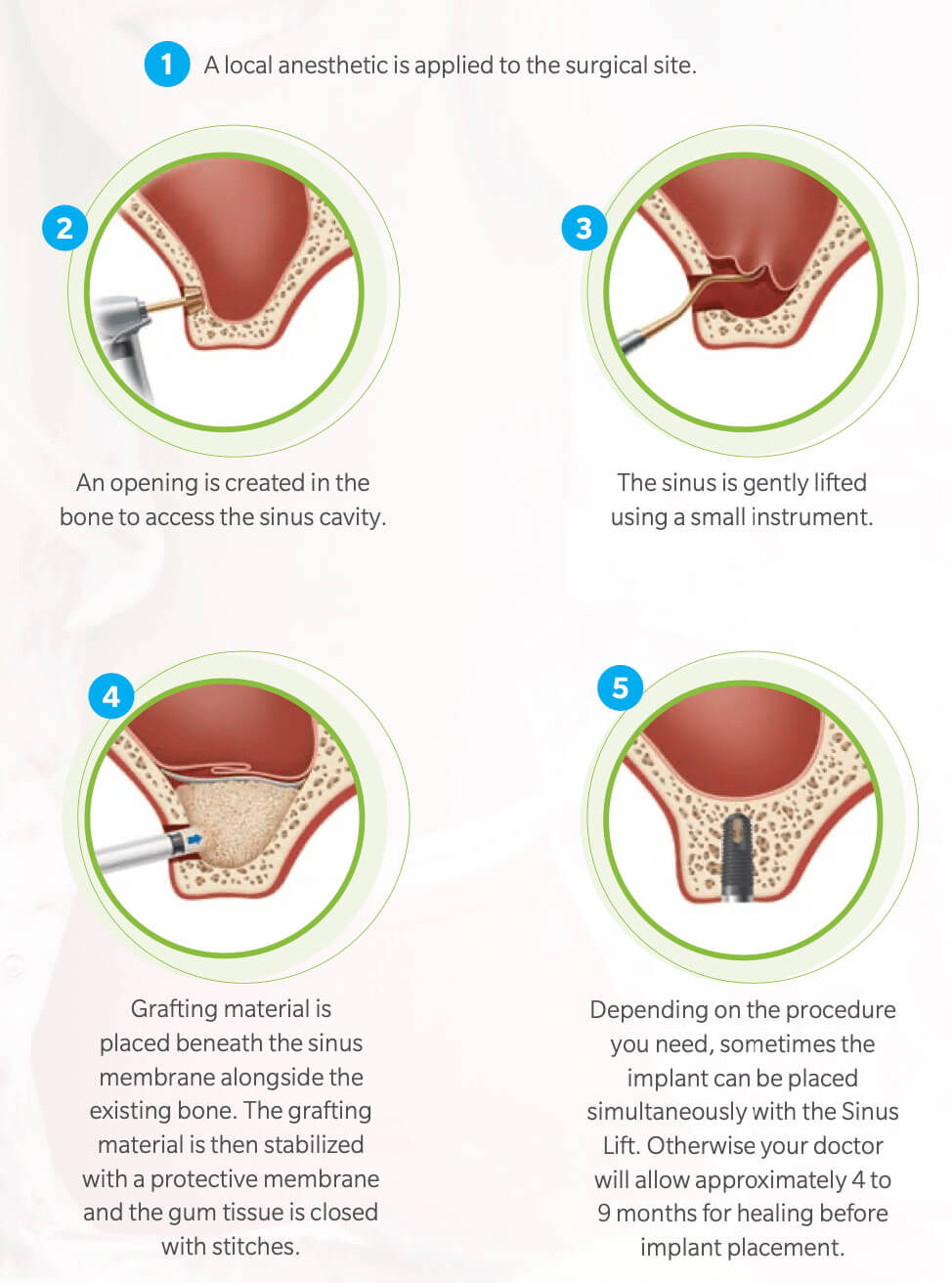Oral Surgery
Our service
Why Do I Need A Sinus Lift?
A sinus lift is often required as a first step when placing a dental implant in the back of your upper jaw. When upper back teeth are lost, bone in that area naturally shrinks or resorbs over time. Consequently, your sinuses expand to occupy the empty space where the bone used to be. Because there is insufficient bone available to securely place the dental implant, the sinuses must be lifted in order to create space for placing additional bone in that area.
What can I expect from a sinus lift procedure?
There are two types of sinus lift procedures available. Your procedure will depend on the amount of bone you have left. Prior to your procedure, we will go over any pre-operative instructions you should follow, as well as any specifics about the surgical process.
Where does the bone come from?
For years, the grafted bone required during a sinus lift procedure had to be taken from another part of your body or jaw, requiring additional surgery. Today, bone grafting materials, such as Allografts may be used in place of your own bone, with no additional surgery required. During the healing process the graft material is indented to act as a scaffold and be replaced by your own new bone.
Bone Graft
Bone grafting is used to prepare a site for dental implants that are needed to replace a missing tooth or teeth. Bone, in an area where teeth have been lost, naturally shrinks or resorbs over time, bone in height and width. As a result, new bone must be grafted to creat a secure site for placing implants and to achieve aesthetic results. Bone grafting can also be used to save teeth that have experience bone loss resulting from gum disease.
Bone loss can be caused by:
• The loss of a tooth
• Localized infection
• Gum disease
• Trauma
What can I expect form a bone grafting procedure?
Prior to your procedure, we will go over any pre-operative insturctions you should follow, as well as any specifics about the surgical process. The following general steps may be included:
Book an Appontment

Booking by phone
OUR CLIENTS
What our Clients say


